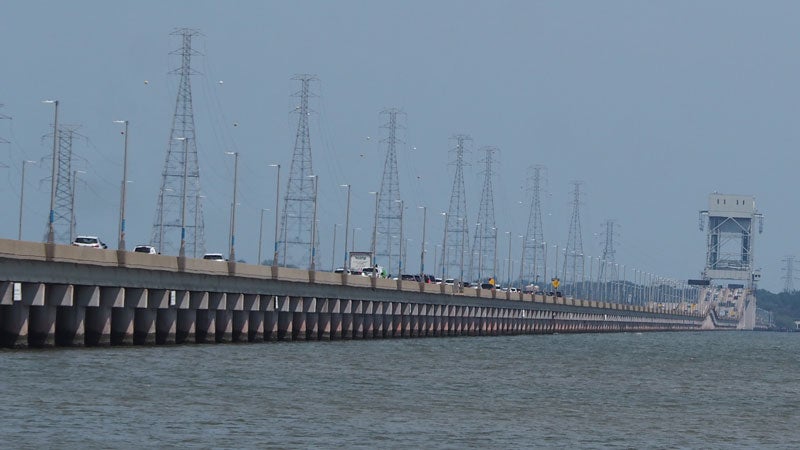Trail’s appearance concerns Council
Published 1:30 pm Wednesday, September 9, 2015
By Diana McFarland
News editorIt’s the width and materials, not the idea of a way for pedestrians and cyclists to get down South Church Street, to which some Smithfield Town Council members object.
One council member wants to see a visual image of what the Nike Park bike trail would look like before writing a check, while others are OK with either a bike trail or sidewalk.
Isle of Wight County Project Manager Jamie Oliver recently told the Smithfield Town Council public works committee that the Nike Park bike and pedestrian trail must be about 10 feet wide and made of asphalt. {mprestriction ids=”1,2,3,4,5,6″}
Smithfield’s portion of the bike trail would run from the Cypress Creek Bridge along South Church Street and meet up with the county’s portion of the trail that runs along Battery Park and Nike Park roads to Nike Park for a total of four miles.
Mayor Carter Williams and Council member Milton Cook would rather use the money the town has committed to the project to construct a sidewalk with curb and gutters that match the sidewalk that already runs along a portion of South Church Street. That sidewalk is concrete, about four to five feet wide and has curb and gutter.
Council member Randy Pack is OK with asphalt, as long as it’s attractive and fits in with the rest of town. However, he wants to see a picture of what it’s going to look like before actually spending any money. So far, the design is only about 30 percent complete, Pack said.
But as far as having a connection between both sides of town and all the way to Nike Park — “that’s not a bad thing” and is “forward thinking.”
Vice Mayor Andrew Gregory and Council member Mike Smith don’t care if it’s a 10-foot wide asphalt bike trail or concrete sidewalks as long as it’s attractive and allows pedestrian access. Either version would help clean up driveways and entrances along that portion of South Church Street that are now ill-defined, Smith said.
Gregory said it would be a boost to businesses along that portion of roadway who have long felt like “red-headed stepchildren of the town” because other areas have gotten upgrades and that part hasn’t.
The 10-foot width is an American with Disabilities Act requirement, and asphalt is being used because it is an approved material and less expensive than concrete, said Isle of Wight County spokesman Don Robertson.
So far, the town has verbally committed about $1.2 million of its VDOT urban funds to the bike trail project, estimated at a total of $7.3 million.
Of that total, about $5 million is from state and federal grants and the remainder is a match from Isle of Wight County.
Isle of Wight has spent about $1 million in planning and design, and Oliver was asking the town to commit about $200,000 to begin the planning and engineering for Smithfield’s portion of the project, Cook said.
Cook is reluctant to spend the money because if that portion is ultimately deemed unfeasible due higher than anticipated costs, then the town loses the $200,000.
Gregory wants to get a firmer grasp of how much urban funds are actually available before making a firmer commitment.
Williams takes issue with the width of the bike trail proposed by the county, because of the number of businesses and residences along that portion of South Church Street.
It’s already a challenge getting in and out of 7-Eleven — imagine taking up 10-12 feet of the parking lot with a bike trail, he said.
Besides, Cook doesn’t see the point in building a 10-foot asphalt bike path that would allow access to Windsor Castle Park when the park doesn’t allow bicycles on its walking trails.
Pack said a bike trail has to be at least eight foot wide to allow for two-way traffic.
Efforts to reach council members Denise Tynes and Connie Chapman were unsuccessful.
When the town of Smithfield initially discussed committing its urban funds to the bike trail project in 2010, the plan was to build a five-foot sidewalk for its portion of the bike trail.
The urban funds were originally set aside years ago to add a turn lane along that portion of South Church Street, but ultimately state budget cuts and high costs caused those plans to be abandoned.
Smithfield can reallocate its urban funds for a sidewalk outside the realm of the county’s project, said VDOT spokesperson Laurie Simmons. There is no deadline for use of the funds, but if the town does pull out from Isle of Wight’s umbrella, it would have to administer the project itself.
Currently, Isle of Wight County is administrating the entire length of the Nike Park bike trail. The county must maintain movement on the project for state and federal funds to remain available, Simmons said.
If Smithfield pulls out of its commitment to the bike trail project, it will not affect Isle of Wight’s portion, Simmons added.
However, if Isle of Wight were to drop the project, it would lose the $1 million it has already spent, Robertson said.
Meanwhile, Isle of Wight has a non-binding settlement with 21 of the 26 properties along the trail allowing them to build a pathway on the land, Oliver said. For properties not willing to negotiate, the county has approved the use of eminent domain on a case-by-case basis. This allows the government to take private property for public use.
Development for the trail has been in the planning stage since 2006 and is part of Isle of Wight’s Pedestrian and Bicycle Facilities Master Plan.
Staff writer Alyse Stanley contributed to this story. {/mprestriction}





